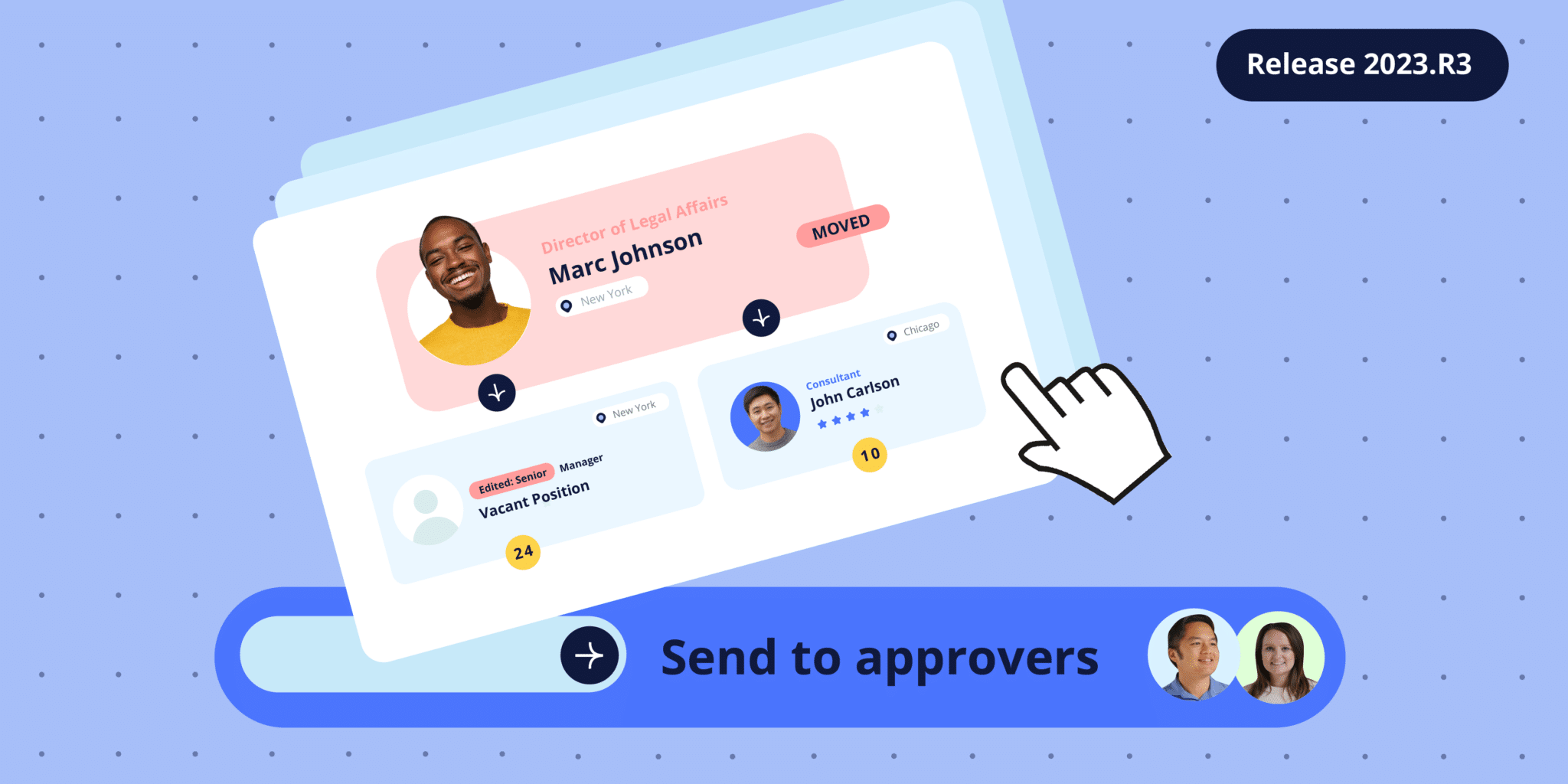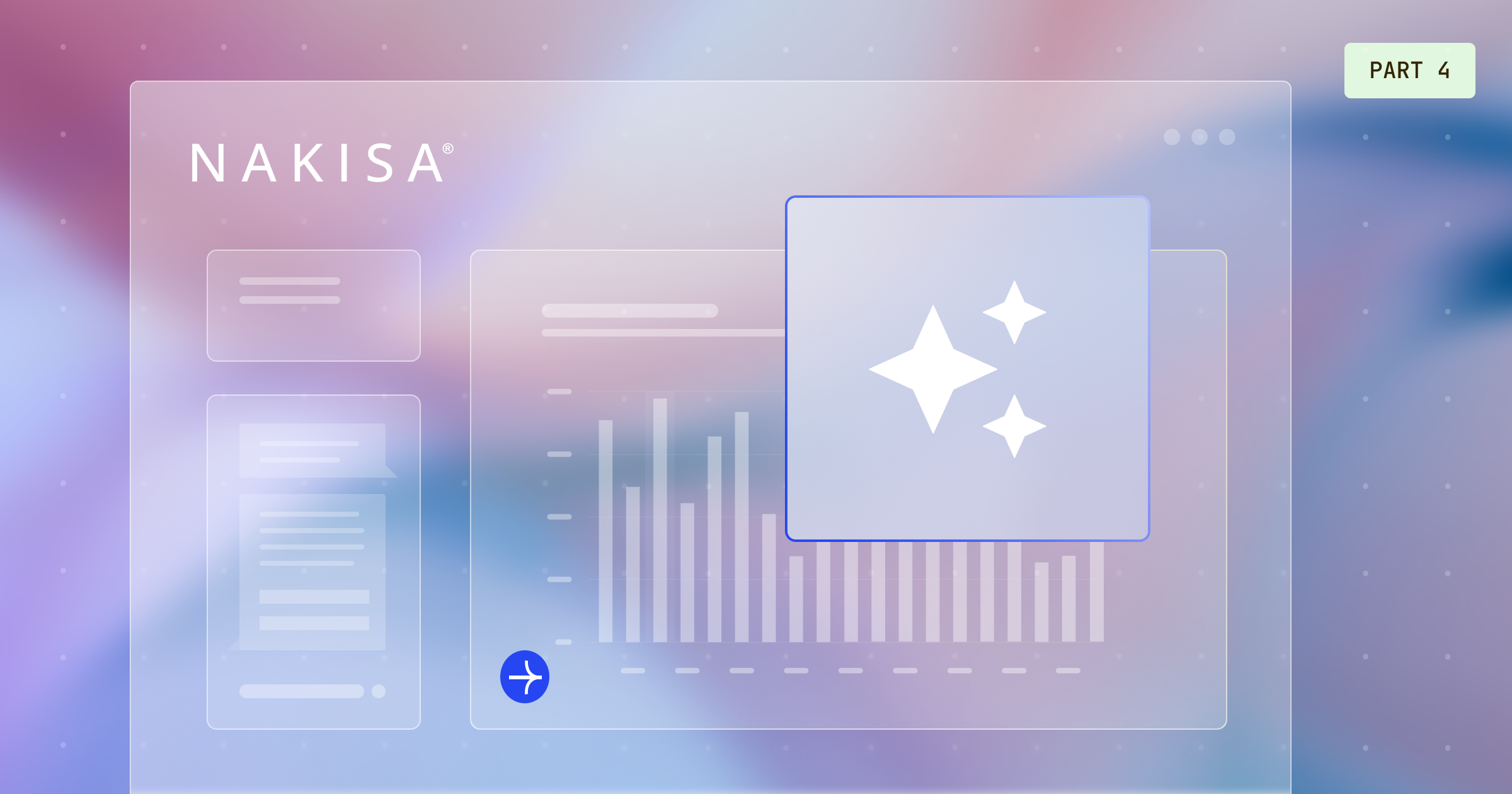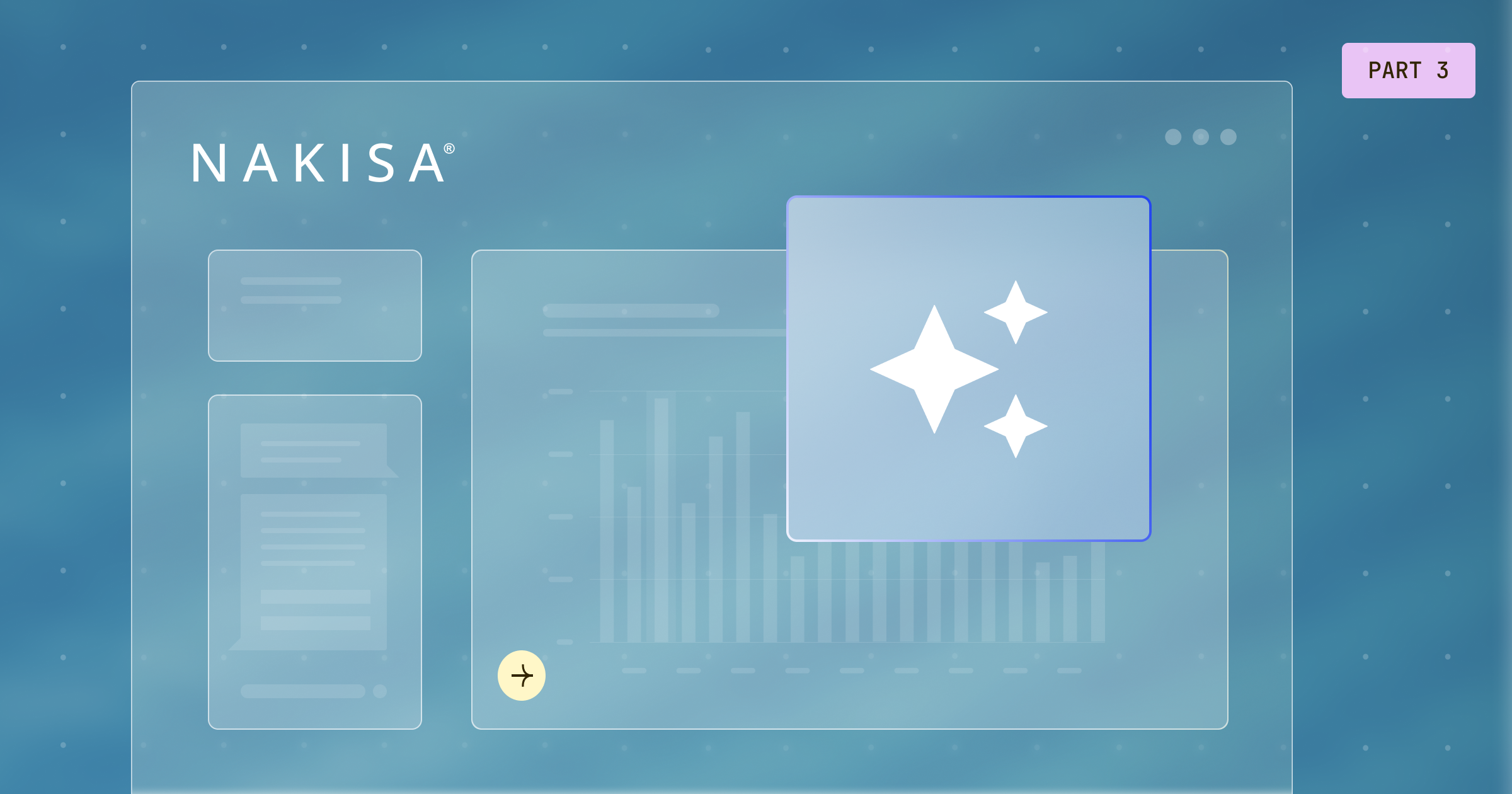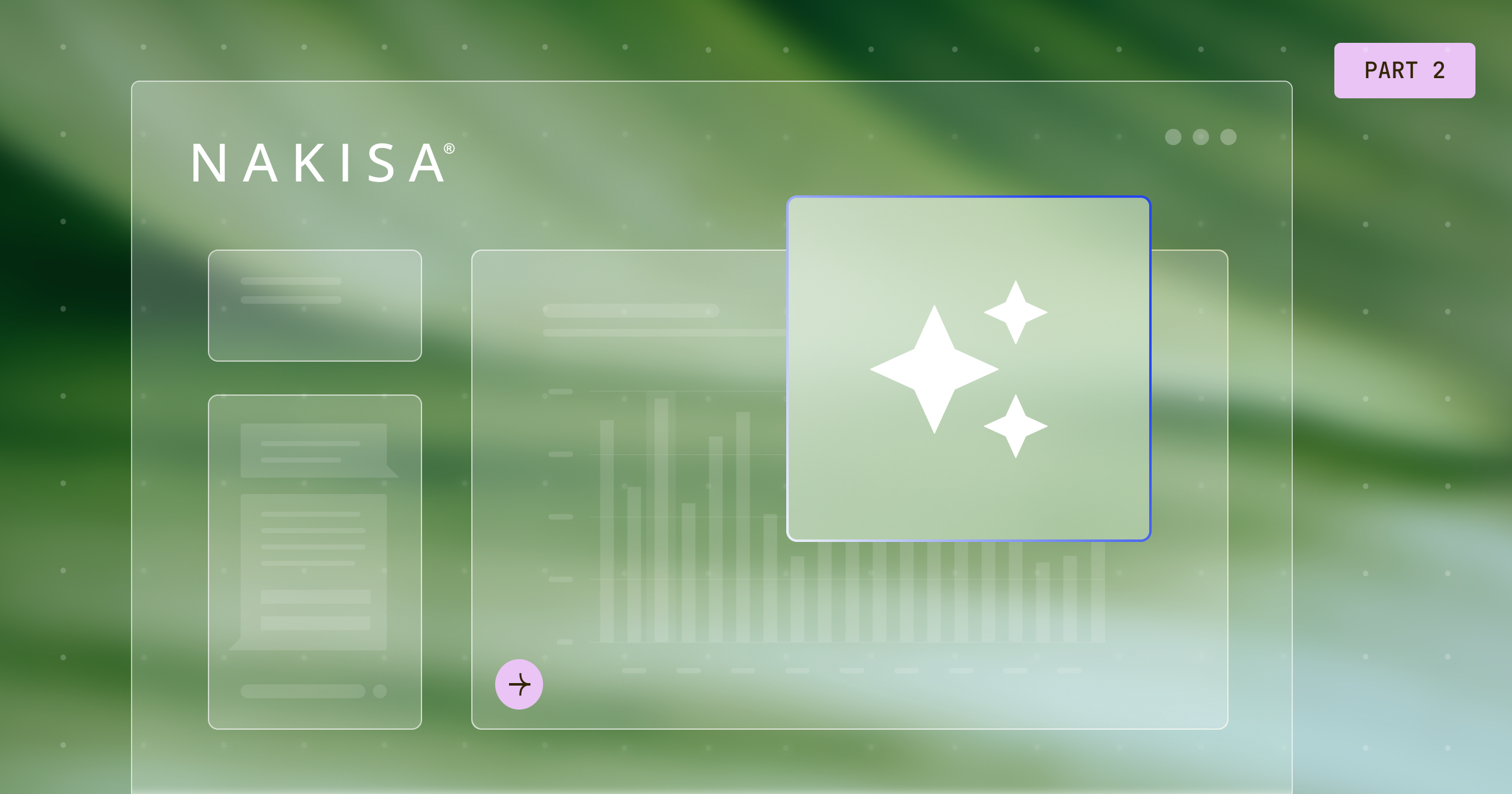Introducing Operational OrgDesign
What is Operational OrgDesign software?
Operational OrgDesign is org design software that empowers managers at any level in the organization to make simple, timely, and effective organizational changes. The rationale for the Operational OrgDesign software is that larger, more complex, top-down organizational design software does not efficiently facilitate workforce planning decisions informed by day-to-day work experiences and needs. Operational OrgDesign overcomes this challenge by putting the power to make structural changes (or other organizational redesign) in the hands of those best placed to understand what’s needed: The leader who’s hiring for his or her own team. This is an example of bottom-up, or operational, organizational design (do you see what we did there?); let’s take a quick look at the differences between top-down and bottom-up approaches to organizational design.
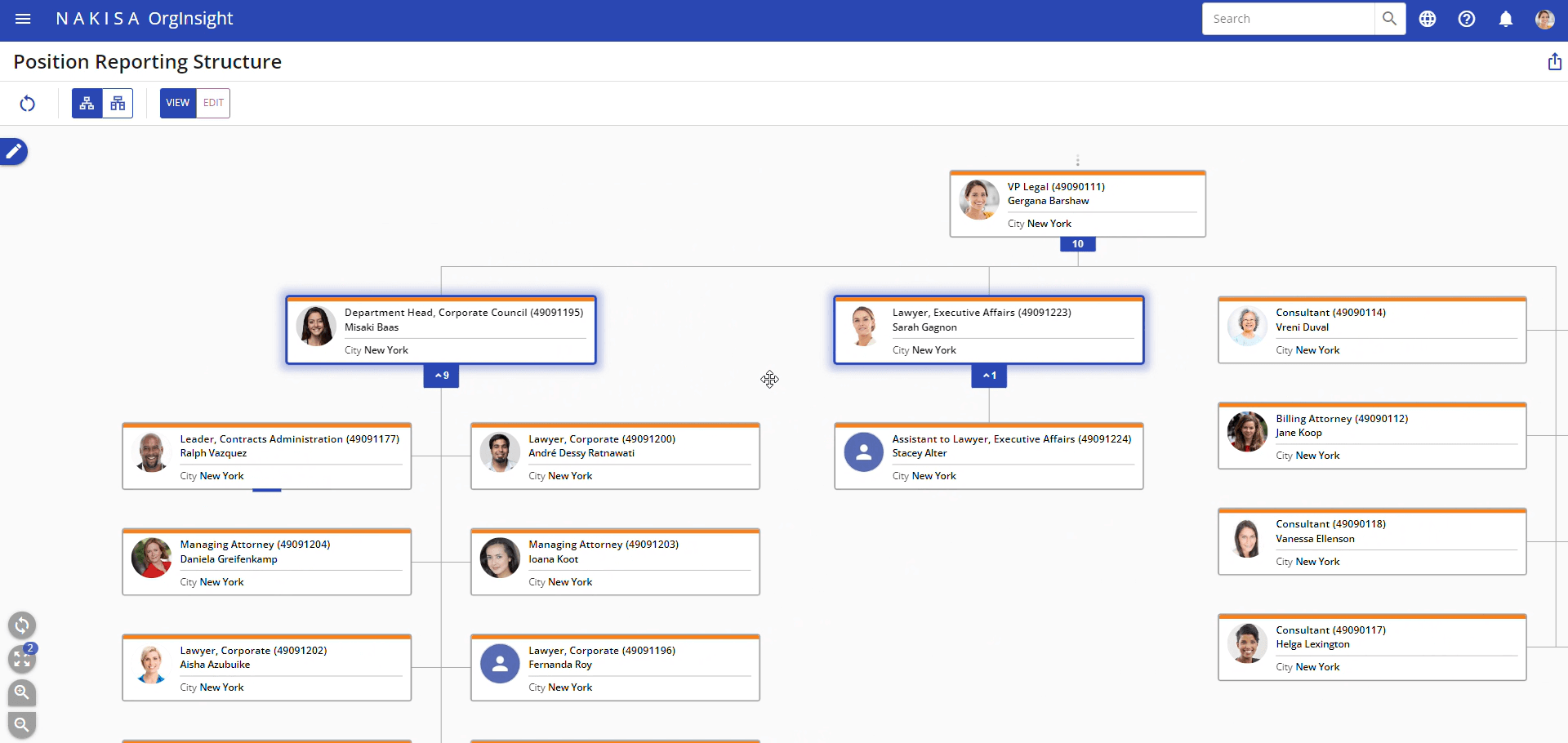
What Is top-down organizational design?
This is what most people have in mind when they think about or enact organizational design. It’s a method of planning out organizations to match a pre-determined strategic vision. As a result, heavy emphasis is placed on understanding the goals, mission, and vision of the organization at hand as a key foundational step. The people who are ideally placed to do this org structure design work are the chief executives and senior leaders (hence, “top-down”). That’s why the top-down approach is also known as strategic organizational design. Once this is done, the remaining steps are grounded in practical steps.
As a basic, high-level use case, consider an organization’s activity following an organizational restructuring (or other reorganization). Or perhaps a merger. The new entity that emerges following either situation calls for a serious re-evaluation of strategy, mission, and vision, and will also necessarily require consideration on how to deal with all of the employees. Top-down organizational design will be necessary to adjust everything to meet the new reality.
From a Nakisa product perspective, this is what OrgDesign, our main workforce planning offering, does: facilitating true organizational design and structure work for the HR professional.
What is bottom-up organizational design?
This approach to organizational design heavily leverages the input from managers at all levels as a means of building a winning organization. They’re usually much closer to the “action”, so to speak, than the executives. Hence, any organizational changes they initiate can be considered “bottom-up” operational, which leads to the terms bottom-up or operational organizational design.
It’s a model that greatly empowers managers to contribute feedback and to actively engage in decision-making for planning and staffing their teams. By necessity, power is decentralized so that the people who experience practical human resource needs can propose the needed role(s) and act to restructure and optimize their team for the organization’s benefit. It encourages flexibility in the form of faster, easier feedback loops and greatly mitigates the risk of recruiting without understanding the true nitty-gritty needs of a role. Managers design organizational structure at their local level.
Here, the common use case is the day-to-day running of a team. What happens when there are too many tasks and too few employees? Or what happens if an edict has been handed down to reduce the span of control? Bottom-up organizational design will be necessary to rework the current team to meet the demand in a way that meets day-to-day needs.
From a Nakisa product perspective, this is what Operational OrgDesign does. Having said that, how does it do all this?
But first, here’s a handy summary table:
| Context | Top-down organizational design | Bottom-up organizational design |
| Type of organization challenge that’s met | Planning starts with a change of strategy or specific event (e.g., restructuring following a merger) | Day-to-day organization management change or proposal |
| Timeframe and scope | Typically geared towards long-term workforce planning | Typically geared towards creating agile, flexible teams |
| Level of organizational impact | Impacts the organization as a whole | Has more local-level organizational impact |
| Use case complexity that’s managed | Geared toward complex org cases such as organizational restructuring | Geared toward simple org cases |
| Other names | Also known as strategic organizational design | Also known as operational organizational design |
| Which Nakisa product supports this? | Nakisa OrgDesign supports all the above | Nakisa Operational OrgDesign supports all the above |
What does the Operational OrgDesign software do?
Operational OrgDesign is designed to do two key things:
- Create proposals for organizational changes at the team level.
- Facilitate seamless sharing, feedback, review, approval, and deployment of the role/talent/team structure proposals.
Many benefits flow from Operational OrgDesign’s functions. By providing managers with control over tactical organizational changes, HR stops being the bottleneck. Managers become the change agent for their respective areas of the organization’s structure, leveraging their firsthand knowledge of the job’s requirements to implement what they believe is the most fitting approch. HR is freed to become strategic advisors in the enterprise, actively doing long-term workforce planning. The effectiveness of the change process is increased, thereby enabling the organization to achieve its objectives more quickly.
Here’s how Operational OrgDesign works:
- A manager who’s a team lead or department head or similar, identifies a gap (too much work, too few staff, or there’s too many direct reports or they receive a new mandate that requires different structures).

- They go into Operational OrgDesign and create a change proposal of their team structure.
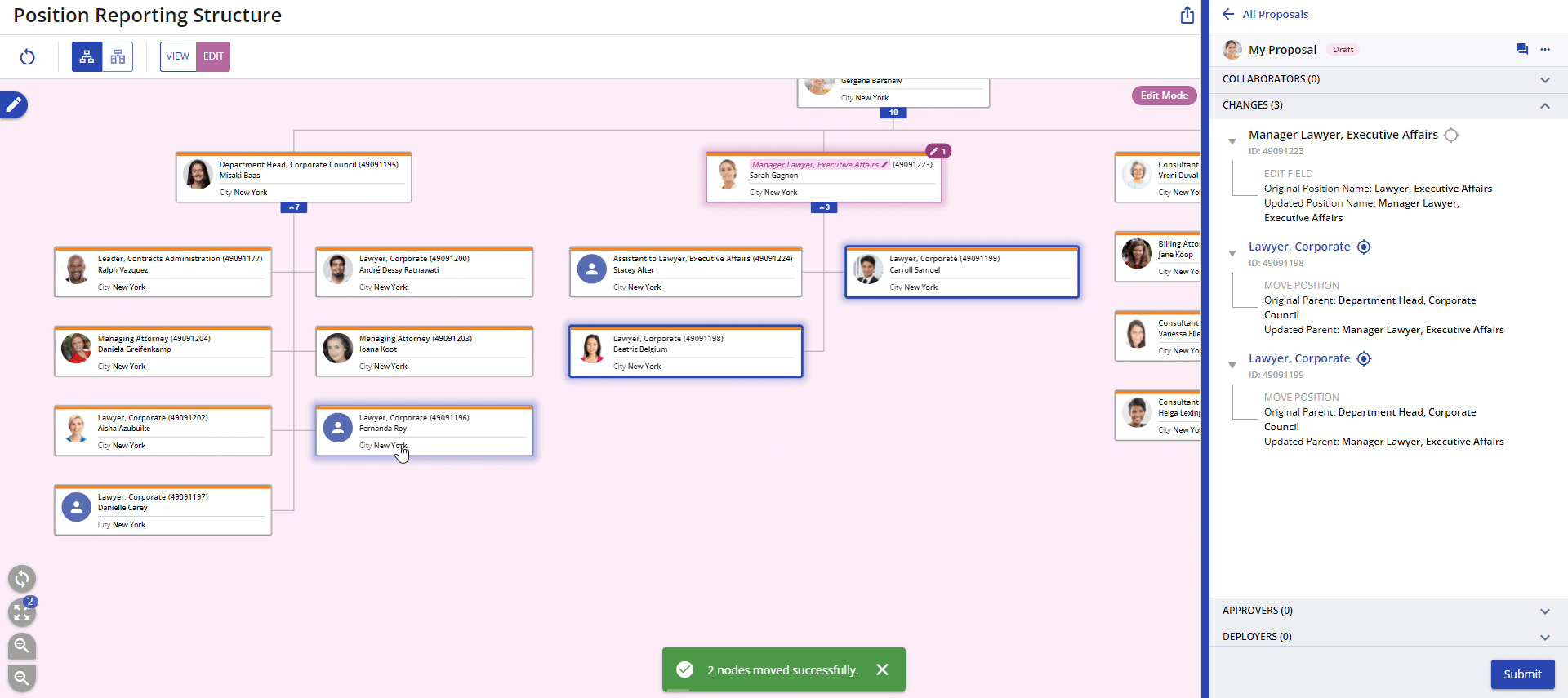
- They share this proposal (including a hypothetical new org chart) for review with other stakeholders, particularly an approver, who can respond in real-time and participate in the creation of the proposal.
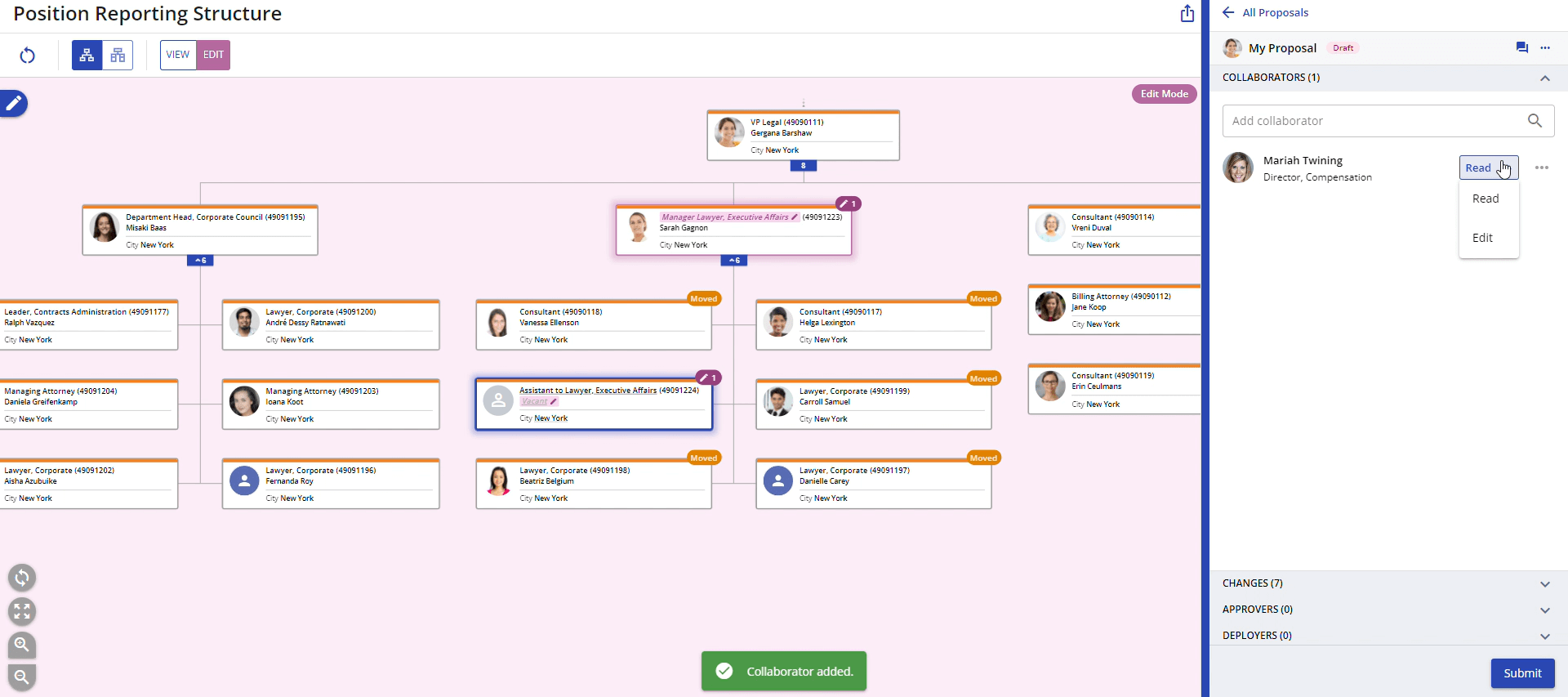
- The proposal is validated and approved (or rejected), and someone is designated as the deployer of the proposal.

- The proposal is implemented, and the right person is found and hired, or the right person is let go.
Easy sharing of org charts (and other key info)
That’s not all though! You know that org charts are helpful for more than just HR professionals. It’s important to let other stakeholders know about how the organization is structured. Operational OrgDesign makes it exceedingly simple to share charts. Once you’ve created an org chart, you can choose who you want to see it, click “share’, and it’s on its way. Doing this helps you foster a culture of transparency and allows employees to find who they need whenever a project requires input from people they’ve never met before.
Now that we’ve gone over Operational OrgDesign, let’s look at the great new features in OrgInsight.
OrgInsight’s enhancements
Nakisa's OrgInsight is a software dedicated to providing easy-to-use org charts, data visualizations, and HR analytics. It has undergone a major transformation to equip HR professionals and other stakeholders with even more powerful state-of-the-art, easy-to-use features. Here are the updates and upgrades:
Org charts that take seconds to generate, complete with dynamic views and HR KPIs
OrgInsight’s org chart feature is among the (if not the) most comprehensive and intuitive org chart software on the market. All your enterprise's HR data is used to visualize the organization structure effortlessly with dynamic views. A set of understandable filters lets you drill as far down as you need and back so you can visually understand the talent across and within teams. You can show key HR performance indicators in the org charts you build, so that every important piece of information you could need is at your fingertips to make data-driven decisions, such as when you’re doing organizational restructuring or some other reorg. Workforce analytics and organizational chart software doesn’t really get easier to use than this.
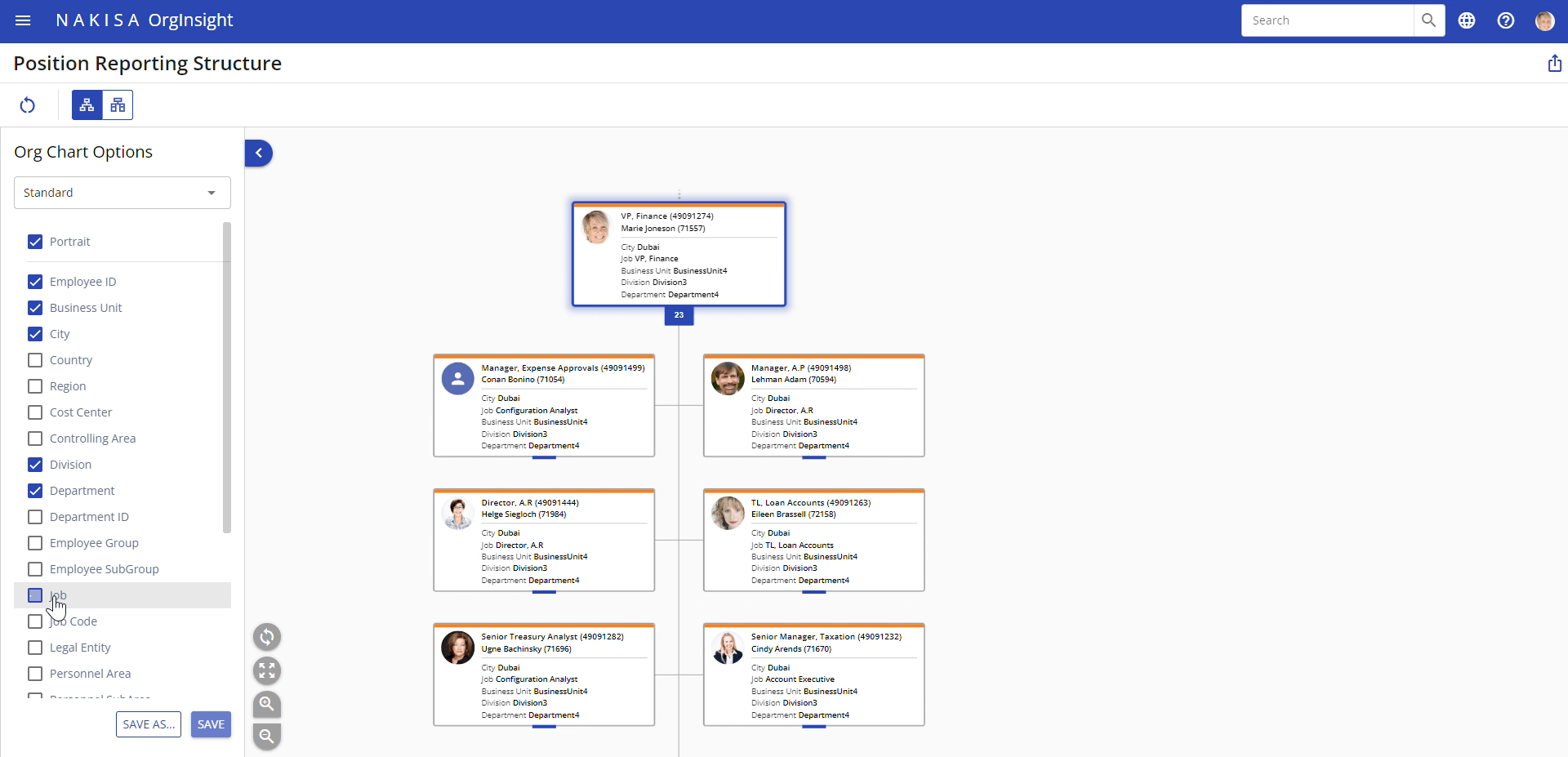
Clear summary org charts
Building on the visualization feature is the ability to truly condense complex organizational structures into concise summary charts. While more (clean) data is always a good thing, too much shown at once overwhelms the ability to clearly pick out trends or important patterns. OrgInsight’s summary org charts demystify the complex, allowing you to gain insights at a glance for fast and effective decision-making.
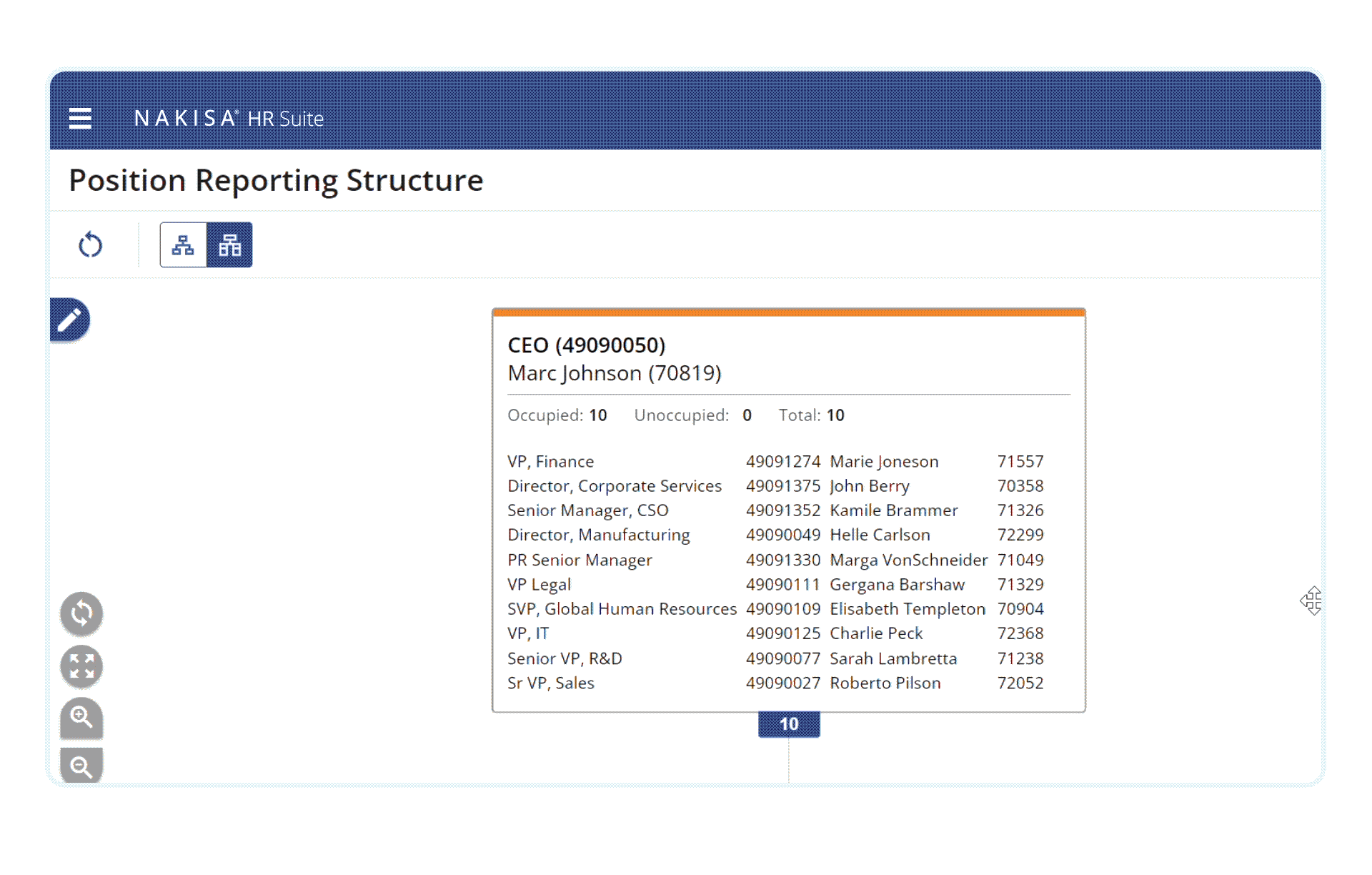
Centralized data via integration
Few solutions offer continuously updated HR data. This is because data is often siloed across different platforms within the same enterprise, making it harder for people analytics and other functions to be accurately done. OrgInsight (and Nakisa’s products overall) centralizes data via native bidirectional integrations between itself and SAP and Workday systems (among other ERP platforms). This allows massive, complex data to always be up to date, ensuring that you’re always visualizing the latest information about your organization’s structure and staff, allowing you to do workforce planning based on true premises. With OrgInsight, you’ll never have to undo or redo work because you discovered your foundational information was wrong.
Conclusion
Nakisa's latest HR Suite release is a critical step in democratizing workforce planning. Both OrgInsight’s new updates and the just-released Operational OrgDesign allow both HR and non-HR staff to visualize the organization's structure, gaps, and strengths, and contribute to both tactical and strategic decision-making. 2024 begins our vision of delivering a truly dynamic workforce planning software that helps enterprises navigate their growth and transformation. Nakisa’s HRIS continues to foster enterprise agility and resilience in the face of change.
Talk to our experts to find out more. Or book a demo right away to see Nakisa HR Suite firsthand!
